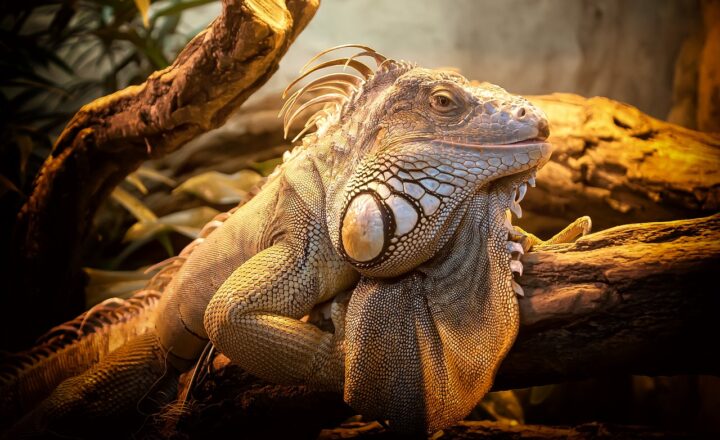The Secretive World of Cryptids: Do Creatures Like Bigfoot Really Exist?
November 12, 2024

The allure of cryptids—creatures whose existence is not substantiated by mainstream science—has captivated human imagination for centuries. Among the most famous of these elusive beings are Bigfoot, the Loch Ness Monster, and the Chupacabra. This article explores the fascinating world of cryptids, delving into sightings, theories, and the cultural impact they have had on societies around the globe.
1. What Are Cryptids?
Cryptids are defined as animals whose existence or survival is based on anecdotal evidence, folklore, or sightings by individuals rather than validated scientific research. The term first gained popularity in the 1980s through the work of anthropologist Dr. John E. Wall in his studies on unknown creatures. Unlike mythical beings, cryptids are often described in specific details—most notably by those claiming to have seen or encountered them.
2. The Legends and Sightings of Bigfoot
Among the multitude of cryptids, few capture the imagination like Bigfoot, also known as Sasquatch. This large, hairy creature is said to inhabit remote forests, primarily in North America. The legends of Bigfoot date back centuries, with various Indigenous cultures telling tales of a wild man living in the woods.
In modern times, numerous sightings have sparked significant interest. One of the most famous pieces of evidence is the Patterson-Gimlin film, shot in 1967 in Bluff Creek, California. The film purportedly captures a Bigfoot walking through the forest, generating debate about its authenticity for decades. While some enthusiasts insist the film is genuine, skeptics argue it was a hoax.
Recent expeditions have resulted in claims of footprints, hair samples, and audio recordings attributed to Bigfoot. However, each piece of evidence has faced scrutiny, and mainstream scientists have largely dismissed them as hoaxes or misidentifications of other animals.
3. Loch Ness Monster: The Aquatic Mystery
The Loch Ness Monster, often affectionately referred to as “Nessie,” is another prominent figure in the world of cryptids. Nestled in the depths of Loch Ness in Scotland, this creature is said to resemble a large aquatic reptile populated with various descriptions spanning from a dragon-like figure to a prehistoric dinosaur.
The modern legend of Nessie took off in the 1930s when a photograph known as the “Surgeon’s Photograp” was published, allegedly depicting a large creature in the loch. Since then, the photo has been scrutinized, with many claiming it to be a hoax. Nevertheless, the image fueled countless expeditions and investigations.
In recent years, studies have utilized sonar technology to explore Loch Ness. While the lake is vast and murky, some researchers have claimed to have detected unusual large objects, further perpetuating the mystery.
4. The Chupacabra: Vampire of the Southwest
Emerging in the 1990s in Puerto Rico, the Chupacabra, meaning “goat-sucker” in Spanish, has made headlines due to reports of livestock being drained of blood. This mythical creature, often described as reptilian and alien-like, has sparked fear among farmers in the regions it is said to inhabit.
Witnesses have reported encounters with the creature, and while some believe it to be a variation of predatory animals like coyotes, others remain convinced of its mythical status. The Chupacabra reflects modern fears and whimsical imaginations, serving as a reminder of the unknown lurking in rural areas.
5. The Why of Cryptids: Psychology and Culture
The fascination with cryptids offers insights into human psychology and cultural beliefs. Cryptids often represent our fascination with the unexplained, serving as cultural touchstones for communities. They reflect fears, curiosities, and the desire to explore the boundaries of what we know.
Additionally, the search for cryptids can also fulfill a psychological need for adventure and community. Crypto-enthusiasts gather for conventions, sightings, and expeditions, creating a sense of belonging and shared interests.
Moreover, the same phenomenon can explain the persistence of cryptid stories despite technological advancement. In a world dominated by science and rationality, embracing the mystery allows individuals time to connect with the unknown—a respite from the mundane.
6. The Scientific Community’s Take
The scientific community has largely dismissed the existence of cryptids due to the lack of empirical evidence. Scientists argue that for a species to exist, it must leave a traceable population, which cryptids have failed to substantiate. Extensive studies, such as those conducted in pursuit of Bigfoot, have not yielded any physical evidence or verified organisms.
However, some biologists understand why cryptid stories persist. Animals that resist classification often remain in obscurity, and cryptids may reflect undiscovered species lurking in unexplored areas. The tropical rainforests and ocean depths hold secrets yet to be discovered, leaving room for speculation and curiosity.
7. Conclusion: The Endless Allure of Cryptids
In summary, the world of cryptids remains a vast and enchanting realm. The stories of Bigfoot, the Loch Ness Monster, and the Chupacabra evoke a sense of wonder, igniting the imagination and inviting exploration of the unknown. Whether rooted in folklore or founded in modern sightings, these creatures spark curiosity and intrigue, providing endless avenues for stories in popular culture.
As long as there are people willing to share their stories and explore the unknown, the secretive world of cryptids will continue to thrive, reminding us of our innate desire to delve into the mysteries that lie beyond our understanding.
Embrace the cryptid lore that envelops our world and consider that sometimes the truth may be stranger than fiction. Perhaps, just perhaps, there might be something hiding in the shadows of our reality.







